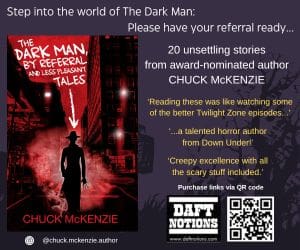Epeolatry Book Review: Our Lady of Darkness by Fritz Leiber

Disclosure:
Our reviews may contain affiliate links. If you purchase something through the links in this article we may receive a small commission or referral fee. This happens without any additional cost to you.

Title: Our Lady of Darkness
Author: Fritz Leiber
Genre: Horror Fantasy
Publisher: Currently Open Road Media Sci-Fi and Fantasy
Release Date: 1978
Synopsis: A horror author is drawn into a mysterious curse in this World Fantasy Award–winning novel from the author of the Fafhrd and the Gray Mouser series.
Fritz Leiber may be best known as a fantasy writer, but he published widely and successfully in the horror and science fiction fields. His fiction won the Hugo, Nebula, Derleth, Gandalf, Lovecraft, and World Fantasy Awards, and he was honored with the Life Achievement Lovecraft Award and the Grand Master Nebula Award. One of his best novels is the classic dark fantasy Our Lady of Darkness, winner of the 1978 World Fantasy Award.
Our Lady of Darkness introduces San Francisco horror writer Franz Westen. While studying his beloved city through binoculars from his apartment window, he is astonished to see a mysterious figure waving at him from a hilltop two miles away. He walks to Corona Heights and looks back at his building to discover the figure waving at him from his apartment window—and to find himself caught in a century‑spanning curse that may have destroyed Clark Ashton Smith and Jack London.
Fritz Leiber is one of genre fiction’s most versatile authors, but he is probably best known for Our Lady of Darkness, a work of urban fantasy.
One day, Franz Westen is standing up on Corona Heights. He casually spots his apartment building and notices, to his disquiet, something pale brown leaning out of his window. The thing waves at him, setting in train an increasingly obsessive (yet equally somehow understandable and rational) desire on the part of the point-of-view character to solve the mystery.
The plot revolves around the geometry and layout of San Francisco, utilizing its unique character and many of its famous landmarks in the process. The premise is that ancient demons can exist just as easily in a wholly modern environment as in ancient houses, castles or graveyards. They wreak terrible vengeance when their slumber is disturbed, and I find it more terrifying when they do so in a calm and calculating manner.
Like many works of urban fantasy, the city that provides the book’s setting also functions as an additional character in its own right. San Francisco, with its Modernist architecture and gridlined street layout, is as important to the story’s psychological underpinning as the hero or his companions. It is the perfect setting for the story that unfolds. The book also has something of an autobiographical feel given that it is based around Leiber’s life in a city he knows inside-out.
The action is very low key, and the feel is uncanny rather than overtly bloodthirsty. Part of the attraction of the story lies in Franz’s investigation into the disappearance of real-life author Clark Ashton Smith.
Through a subtle blending of real historical figures with those of his own invention, Leiber pays fond homage to those who came before him. Horror writing is quite a hierarchical genre, drawing upon influences from past writers in ways that are continually developing and shooting off in new directions, so this style of approach feels very right.
The plot development and ending were satisfying and affirming, and overall (despite the weird focus throughout) it finished in a way that was unexpectedly positive. It felt far cozier than a different writer (Lovecraft, for example) would have delivered, and this acts as a pertinent reminder that, whatever lineages exist in the development of horror fiction down the generations, each writer of genius tells the tale that grows inside them and in the style that speaks best to them.
5/5 stars
Available on Amazon.
- About the Author
- Latest Posts
They are a non-binary writer and reviewer of fantasy and horror fiction. They are a Contributing Editor with Albedo One Magazine and a reviewer with the British Fantasy Society and Schlock! Webzine. Their fantasy novel ‘Dagmar of the Northlands’ is out now on Kindle and Smashwords. They have had short fiction published in many anthologies from small presses and in a number of magazines, including The Horror Zine. They also hold a Postgraduate Certificate in Creative Writing from Newcastle University.










